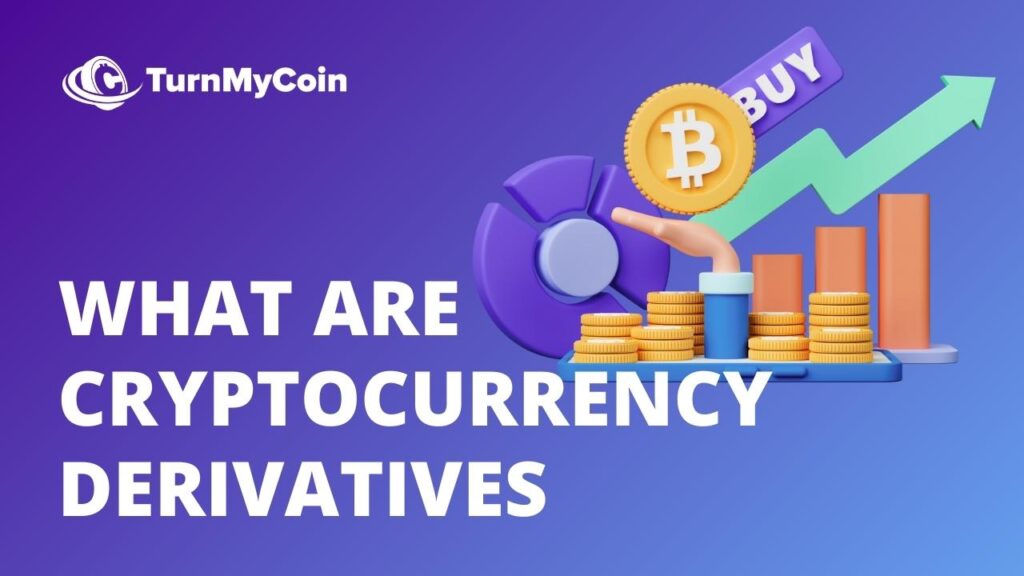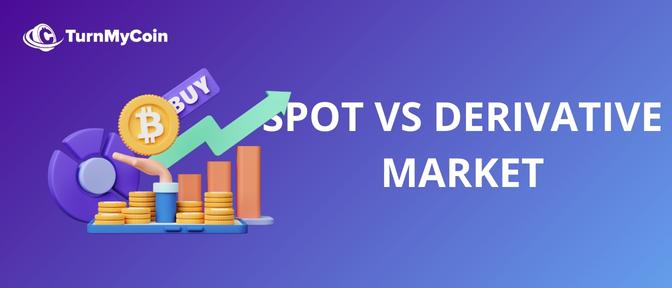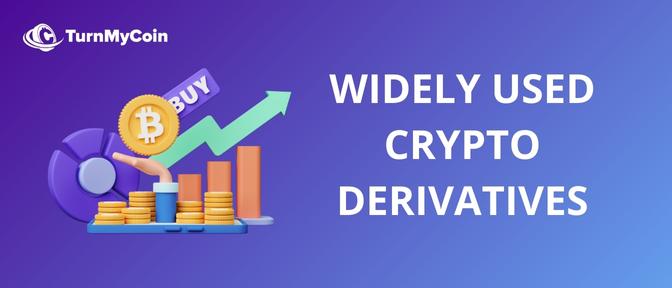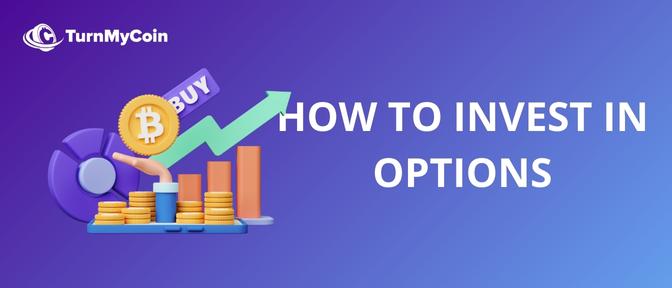Last updated on January 19th, 2024 at 06:46 am

The majority of exchanges, including Phemex, also facilitate trading in Cryptocurrency derivatives contracts. The expertise required to participate in these marketplaces meaningfully is far higher. On the other hand, the complexity of these financial instruments enables traders to have much more control and flexibility in their transactions.
Table of Contents
What is the difference between cryptocurrency spot markets and cryptocurrency derivatives market?

A Bitcoin spot market allows traders to buy and sell Bitcoins at any moment but also imposes some restrictions on such transactions. For instance, investors will only be able to profit if bitcoin prices continue to rise. Everyone who now has BTC will lose value if the price continues to fall. Even those fortunate enough to sell before a substantial decline and intend to buy back in at a lower price require costs to rebound before they can do so.
If things don’t work, there is no way to profit from this situation. Spot markets are distinguished by several characteristics, one of which is that traders are required to physically hold the assets on which they wish to speculate.
Conversely, a Bitcoin derivative can make it possible for individuals to trade contracts. Whose value is tied to the price of Bitcoin without ever having to own any Bitcoin.
Described in Terms of Conventional Derivatives Markets
Using a physical item provides the most precise illustration of this point. Assume that you are interested in making a bet on the oil price. It is possible to go out and buy barrels of oil, which you could turn around and sell after the price has increased. This is unfeasible and expensive because you must account for the costs of storing and transporting the items. Trading an instrument or contract with a price linked to that of oil would be a lot more effective strategy than any other option.
Detailed Explanation Can Be Found Within cryptocurrency derivatives Markets
These pacts are agreements you make with the party you are competing against. Let’s return to Bitcoin for a moment and pretend that you and someone else both feel the price will increase but that one of you is more optimistic. You and this other speculator can agree that after a predetermined amount of time. Once the price has moved in any way, one of the parties will be obligated to pay the other party the price difference. This agreement can be made verbally or in writing.
Exemplification of the Trading of Bitcoin Derivatives
Take the price of bitcoin as an example: let’s suppose it’s currently at $10,000, and you think it will go up. Your counterparty is placing bets that it will decrease. When it comes time to settle the contract. The other trader must hand out $1,000 to you if the price has risen to $11,000 by then. If the price goes up to $9,000, you must make an additional payment of $1,000.
As you can see, a trader or investor can make money off such a deal or contract even when prices go down. And they do so without ever having to take physical possession of the underlying item. Even while this is approximately how bitcoin derivatives operate in the context of trade. The fact remains that there are many different ways in which they can be structured.
Which cryptocurrency derivatives are the most widely held today?

Futures, options, and perpetual contracts are the three types of cryptocurrency derivatives that are used the most frequently in the bitcoin sector.
What are bitcoin futures?
According to the previous explanation, a Bitcoin future is nothing more than a contract. An agreement between two parties to buy and sell BTC at a specified price at a predetermined time (hence the name). On the other hand, neither of the parties is required to physically possess the underlying asset, which in this example is Bitcoin. Instead, they pay the deal in U.S. dollars or other previously agreed-upon currency. The futures contracts have a specified settlement date, differentiating them from the other crypto derivative instruments.
What Should You Know Before Investing in Bitcoin Futures?

Let’s look at a real-world example of somebody trading Bitcoin futures. The length of the contract is one of the first things a trader will need to decide on. Exchanges for crypto derivatives typically include several different period options. Including weekly, bi-weekly, and quarterly. Assume you are interested in trading weekly BTC contracts for $10,000 per contract, where each contract is worth $1 of BTC. This indicates that the minimum number of contracts required to open a position with a value of 1 BTC is 10,000.
Trade cryptocurrency derivatives contracts with a leverage of up to 100 times.
At this point, a trader can go long, which means betting that the price will continue to rise, or going short (bet that the price will decrease). When you open a position on an exchange, regardless of which way you plan to trade. The platform will effectively pair you with another trader trading in the opposite direction. When the contracts need to be settled a week later, one of the traders will be responsible for paying the other. If you decide to sell short and the price drops a week later, you will have made a profit. You will incur a loss if the price increases since you purchased the asset.
Options on a Bitcoin exchange are known as.
Bitcoin options are similar to cryptocurrency derivatives contracts in that they track the price of bitcoin. Still, unlike traditional contracts, bitcoin options do not always need to be settled when they expire. They provide traders with the opportunity or the right to purchase or sell at predetermined prices at defined future dates. Which is why these are referred to as options.
How to Invest in Options Based on Bitcoin?

The Fundamentals of Options: Calls and Pulls
If we continue to utilise the same example as before but this time replaces crypto futures with options. We would need to adjust to the following essential aspects. In the world of Bitcoin options, there is no such thing as “going long” or “going short.” Instead, there are “call” and “put” options. At the contract’s expiration, the owner of a call option has the right to buy bitcoin at a previously agreed-upon price. On the other hand, a put option grants its owner the ability to sell the underlying asset. In each scenario, the proprietor retains complete control over whether or not they use the available opportunity to exercise their right.
Example of a Bitcoin Option
For instance, if you buy a call option for Bitcoin at the price of $10,000 that will expire in a week. This means that one week later, regardless of where the price is. You can purchase one Bitcoin for the price of $10,000. This is true even though the price may have changed (the price at which you can buy the asset in the future is called the strike price).
If the price of Bitcoin had increased to $11,000, you would most definitely make use of your right to sell Bitcoin. Because you can buy Bitcoin at a lower price and sell it for a profit of $1,000. If the price has dropped below $10,000, you can let it expire because buying a BTC at the strike price would result in a loss. Nevertheless, if the price has risen beyond $10,000, you would choose to exercise the option.
It is essential to clearly understand that trading cryptocurrency derivatives via options does not provide investors with a risk-free manner of doing so. Each option has its price, referred to as a premium and can change depending on how the market performs. If a trader allows their option to expire without exercising their right to purchase or sell, they will still be out of the premium they paid.
What exactly are Bitcoin Perpetual Swaps and Bitcoin Contracts, and how do they work?

cryptocurrency derivatives , known as perpetual bitcoin contracts are distinguished from futures. And options because they do not have a settlement or expiration date. Traders have the ability, subject to specific criteria, to keep their positions open for as long as they see fit in the market. One of these requirements stipulates that there must be a minimum balance of bitcoin in the account (margin).
The funding rate is an additional distinguishing component that should be considered. This is a one-of-a-kind technique that assists in tying the cost of the everlasting contract to the cost of Bitcoin. As a result of the fact that a futures contract has a time limit. The price of the contract will always converge with the price of the underlying asset when the contract expires. Because perpetual agreements do not come to an end, their prices have the potential to begin considerably diverging from bitcoin’s prices. One possible solution to this issue is for one group of traders to compensate the other group.
How do you trade a perpetual contract?
People would not be motivated to open short positions, for instance, if there are already an excessive number of traders holding long positions and the price of Bitcoin perpetual contracts is increasing at an excessively higher rate than Bitcoin’s spot price. Under these circumstances, the funding rate would turn out to be positive. When the funding rate is positive, all long holdings must pay short for their short positions.
When the funding rate is negative, those who are short have to compensate those who are long. This payment incentivises traders to liquidate their long positions and maybe open short positions, which ultimately drives the price of Bitcoin closer to its actual market price. To avoid doubt, this payment is made directly between different traders. Exchanges do not do the collection of financing payments.
Exemplification of a Bitcoin perpetual contract
Let’s have a look at one more illustration, shall we? BTC/USD perpetual contracts on Phemex are each worth $1 of the underlying cryptocurrency. For $10,000, you would have to create a position of 10,000 warrants to trade the same amount as one bitcoin. If you are going long, you are free to keep your job open for as long as you like until the price has risen to a point where you are happy. This could take anywhere from a few hours to a few months.
As soon as you decide to cancel our position, the exchange will pay you the difference between the price when you entered the position and the price at which the work is being held. This payment was made by another trader who decided to short and lost money. The only expenses you need to be concerned about are the funding rate payments discussed earlier and any additional exchange fees.
Cryptocurrency derivatives can be leveraged.
Trading perpetual contracts can be done in several ways, the simplest of which is detailed above. On the other hand, you can add another facet to your trading strategy if you use Phemex because it has this feature. Using leverage, you can trade a position that is far more valuable than the initial margin you put up.
For instance, if you utilize the power of 100x. You can start with $100 and double that amount by 100 to trade a position worth $10,000. When there is a greater possibility for earnings, there is also a more significant potential for loss. The more Cryptocurrency derivatives leverage you apply, the greater the likelihood that you will lose all of your money. Even if there is only a slight movement in the price in the opposite direction influence.
Conclusion
Always remember to do your homework when dealing with a financial instrument, practise before you risk actual money, and never risk more than you can afford to lose.